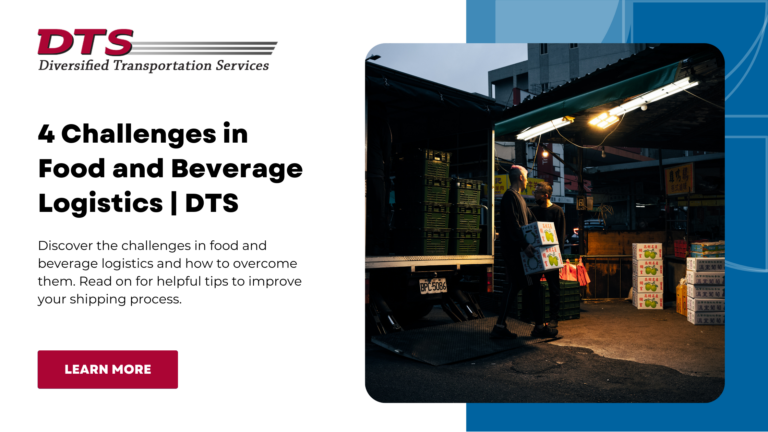
For any business supplying food or beverages (or both), shipping products safely is crucial to success. Incorrect transportation can lead to a wide range of issues, most notably illness caused by spoiled food. Any problems in transit may also lead to supply delays, disruptions, and financial losses.
Fortunately, understanding the common challenges involved in food and beverage logistics can help your business overcome them. In this post, we’ll explore four potential problems and how to solve them to improve your shipping process.
Here are some of the most common challenges in food and beverage transportation and how to solve them.
Maintaining the ideal temperature is crucial when transporting perishable food and beverages. This will help prevent spoilage and ensure products reach their destination in the best possible condition.
An estimated 48 million cases of foodborne illness occur each year in the United States, and poor temperature control is just one possible factor behind food contamination. Transporting products in an unsuitable environment increases the risk of harmful bacteria growing and spoiling goods.
To maintain the proper temperature for food and beverage goods, businesses should use temperature-controlled shipping methods. Two common and effective options are:
Businesses involved with food and beverage logistics must adhere to strict safety regulations, such as the Food Safety Modernization Act (FSMA). This was signed into law in January 2011 and gave the Food and Drug Administration (FDA) new powers to regulate food supply.
These regulations are in place to prevent food-borne illnesses that could arise from incorrectly storing goods. Adhering to these and other regulations will help keep food and beverage products and consumers safe.
Work with a food and beverage transportation partner who has significant knowledge and experience in this complex area.
It is essential to protect fragile food and beverage products from damage during transportation. Even minor damage to goods could lead to spoilage, supply disruptions, and financial losses. Businesses that consistently fail to package and ship their products properly may suffer lasting reputational damage.
Suppliers use a variety of packaging materials to keep goods safe and secure, including paper, cardboard, plastic, and metal. Some materials are better suited to certain products than others. Understanding which works best for your food and beverage logistics needs will help you avoid issues.
To protect food and beverage goods safe in transit, try these simple steps:
Balancing transportation costs with service quality, especially considering the need for specialized equipment and rapid delivery options, can be difficult. Finding ways to ship products efficiently is vital, but not at the expense of their quality. Issues with ineffective food and beverage transportation can lead to expensive waste (like needing to dispose of spoiled goods).
Follow these steps for more effective cost management:
Shipping food and beverage products can be complex for any business. It demands careful planning to find the right packaging, transportation methods, and routes. Failure to comply with storage and shipping regulations can be expensive due to wasted goods, fines, and lost revenue.
Working with an experienced shipping logistics company is the simplest way to ship food and beverages effectively. DTS arranges food shipping solutions for businesses of all sizes at competitive rates.
For a quote, get in touch with DTS today.
Whether you're a company looking to improve one facet of your supply chain, your entire supply chain, or simply looking for a transportation and logistics consultation, we can help.